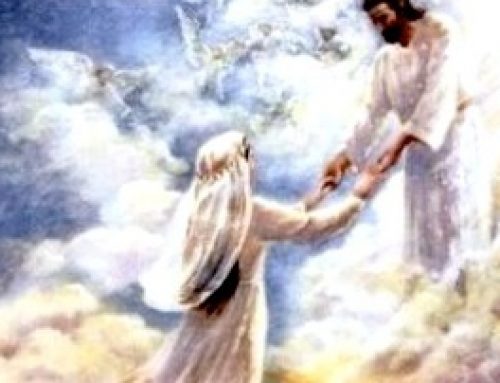Respecting God, Psalm 90:2 declares, “from everlasting to everlasting you are God.” Hence, God has no beginning and no end. God is eternal and God is a spirit (John 4:24.) God’s angels are also spirits (Hebrews 1:7). We are assured in Genesis 16:13 that God is all-knowing, “You are a God who sees…” God is all-powerful, Luke 1: 37, “Nothing will be impossible with God.” Yet, how thankful we are for the common-sense clarification of Hebrews 6:18, “It is impossible for God to lie.” God is only truthful. God is always just; this is the very foundation of his authority “Justice and judgment are the habitation of thy throne: mercy and truth shall go before thy face” (Psalm 89:14). But above all, “God is love” (I1John 4:8) a love so great that he gave what was most precious to him, his own son Jesus Christ (John 3:16).
This only begotten son of God, Jesus Christ, declares himself to be “the beginning of the creation of God;” (Revelation 3:14). Hence, by his own testimony he had a beginning and thus is not co-eternal. Yet, what a privileged position he then held, for we learn from John 1:3 “All things were made by him; and without him was not anything made that was made.” John 1:1-2 speaks of this oneness of purpose from the beginning. The unwarranted translation of John 1:1 “The Word was God” confuses this relationship in the creative process, but Proverbs 8:22-31 clarifies it when it plainly says, “The LORD possessed me in the beginning of his way, before his works of old,” and then provides beautiful details of this loving father and child relationship operating in Creation. 1 Corinthians 8:6 speaks in harmony with this, “there is but one God, the Father, of whom are all things…and one Lord Jesus Christ, by whom are all things…” God plans, Jesus enacts the plan. The Holy Spirit is the means by which God exercises his unseen power. To give the Holy Spirit personhood confuses the clear meaning of Scripture.
The word “trinity” is not a scriptural term. It was coined by Theophilus of Antioch (died 183 A.D.) a full 150 years after our Savior’s crucifixion. “Trinity” according to Theophilus did not to refer to the Father, Son and Holy Spirit. Theophilus himself puts it as “God, his Word (Logos) and his Wisdom.” Arguments to define “Trinity” took place over the next 200 years. The church was deeply divided over whether to even accept this theological novelty not authorized by scripture and many places not under Rome’s power did not accept it. Fighting over the “Trinity” led to Emperor Constantine calling the Nicean Council (325 AD) but the unsatisfying compromise at Nicea led to subsequent church councils over the next 50 years. To bring order from this chaos, Emperor Theodosius issued the Edict of Thessalonica (27 February 380) “…let us believe in the one deity of the Father, the Son and the Holy Spirit, in equal majesty and in a holy Trinity. We authorize the followers of this law to assume the title of Catholic Christians; but as for the others, since, in our judgment they are foolish madmen, we decree that they shall be branded with the ignominious name of heretics…[subject to] the chastisement of the divine condemnation and in the second the punishment of our authority…” Thus, the Catholic church with the power of the state to enforce Catholic belief established the “Trinity” as orthodoxy until the Protestant Reformation. Then the freedom to again examine the scriptures in their simplicity challenged this non-scriptural belief.
Additional Resources:
The trinity has been a highly controversial doctrine for many centuries. Because of the strong feelings surrounding this doctrine few are willing to delve into the Bible to see what it really says about the true nature of God and His son, Jesus. This enlightening booklet is therefore intended for the serious student who wants to know what the Bible really teaches. In addition, is the holy Spirit a person and a third member of the trinity? See how the holy Spirit is used in Scripture.
Download PDF: The Lord Our God is One Lord
Christian Questions Podcast
“Who is God?” A 3-part series
Preview Video
CQ Rewind Show Notes for Part I











